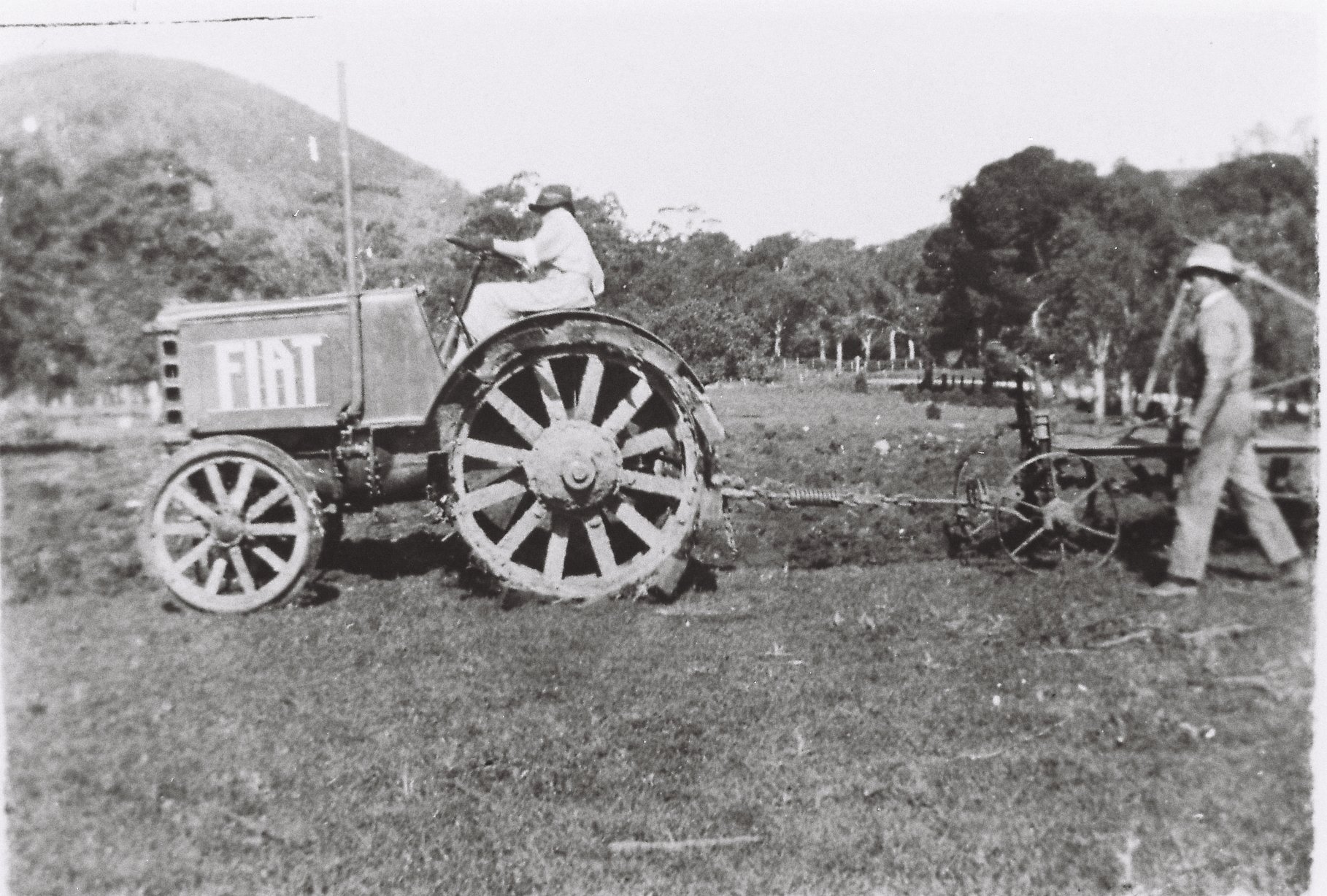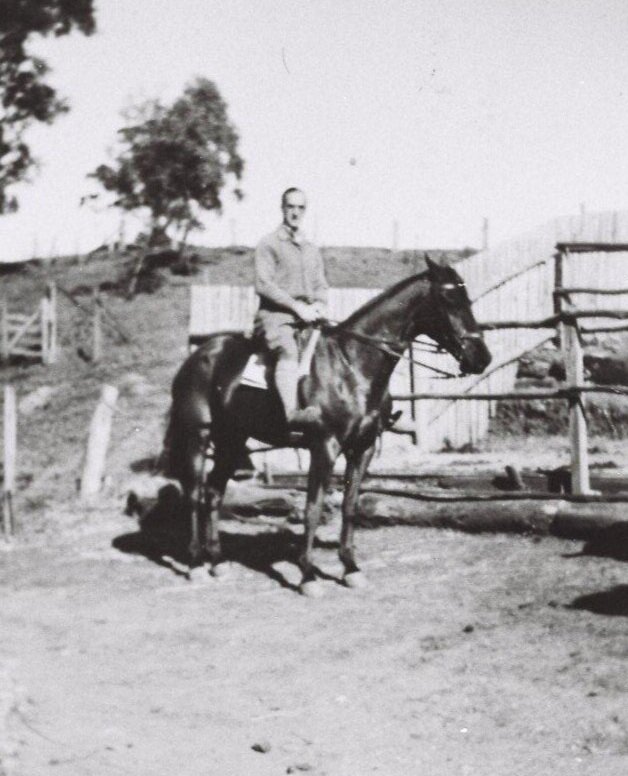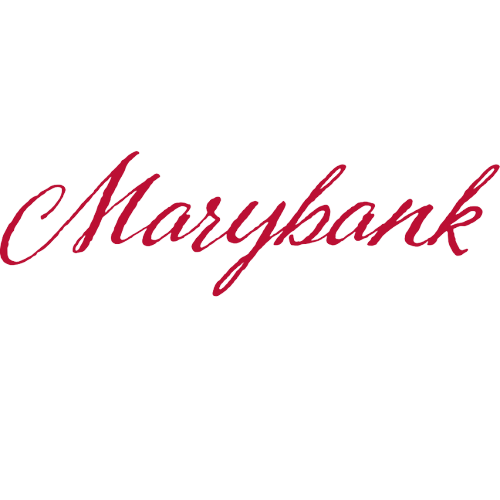
the History
1839
THE SHEPHERDS
The original owner and builder of the ‘Marybank Estate’ was South Australian pioneer Mr Thomas Shepherd Esq.
Mr Thomas Shepherd first arrived in South Australia from Scotland, aboard the ship ‘Lady Emma’, August 17th, 1838. A Gentelman, wealthy Merchant and business man.
Mary Murray was the daughter of Captain Alexander Murray, a Lieutenant and town surveyor for Hobart town where she was born in 1820. After her father died the family moved to Adelaide from Tasmania aboard the ship ‘Samuel Baker’, 27th July 1839.
Mary and Thomas married on August 6th 1839 at Holy Trinity Church, by the first Reverend Charles Beaumont Howard in Adelaide. One year later the couple travelled back to Britain aboard the ship ‘Fairlie’ via Calcutta to return with with Thomas’s sister, Jane, on the 'ship ‘Orissa’, 20th November 1841.
The Shepherds purchased the land near Black Hill, approx. 560 acres, which was previously owned by Charles William Stuart, a prominent Campbelltown Merchant.
The ‘Marybank’ homestead was built in 1842. After having 4 children on the estate, a fifth was born just a month prior to leaving the colony. Mary’s sister Frances was also married at ‘Marybank’ to Henry Metcalfe in 1846. The Shepherd family departed for London on the ship ‘Brooksby’, 16th February 1853.
In December of 1852 the Shepherds had unsuccessfully put ‘Marybank’ on the market. The house consisted of a dining room, drawing room, breakfast room, bathroom, four bedrooms, nursery, cellar, and servant’s offices, plus a dairy, surrounding Veranda and Terrace. There was also a four stall stable, coach-house, harness room, plus poultry yard and piggery.
8th Sept 1855
Death of Mrs. Shepherd.— Many of our readers will hear with regret that Mrs. Shepherd, the wife of our old and esteemed fellow-colonist Thomas Shepherd, Esq. after suffering severely from a malignant attack of smallpox, occurring shortly after her confine-ment, died at London on the 23th May last. Mr. Shepherd had returned from a visit to Jersey, and preparing to come back to the colony when he sustained his sad bereavement.
Thomas Shepherd died March 1858 in Edinburgh, Scotland.

“The scenery altogether is exceedingly picturesque and romantic.”
— South Australian Odd Fellows Magazine, 1845
1853
THE ‘FOX’
Arthur Fox was born in Killashandra, County Cavan, Ireland. He arrived in Sydney on August 2nd, 1841 on the passenger boat ‘Elizabeth’ at the age of 21. Arthur was a bounty Iimigrant but it is unclear who sponsored him to Australia. He was listed as an educated Farm Steward.
Over time Arthur had moved to Adelaide and by co-incidence had just returned from the goldfields. He had become an Auctioneer whom was approached by Colonel Shepherd to sell ‘Marybank’. Arthur was obviously so taken with the place that he decided to buy it for himself and his wife, Frances Ellen (decendant of Henry Cashell, of Bushfield, Co.Tipperary Ireland) and their three children.
Having trained as an Apothecry in Ireland he believed the Spring water at ‘Marybank’ was as pure as the water used in the Guinness Brewery in Dublin and he planned to start a brewery there.
Unfortunately, Arthur did not live long enough to realise his dream. He drowned crossing the River Torrens on May 1st, 1853, aged only 33.
THE EARLY DAYS
Marybank Farm exported oranges to England and grew Grenache and Pedro Grapes for the nearby Stonyfell Winery. Most of the garden you see today is the work of Dora Fox (3rd generation) who cared for the garden from 1921 to 1995, also introducing the beautiful lawned areas you see today. “The Far Garden” and its view looking back toward Black Hill was her favourite spot.
THE ‘fox’ legacy
During the twentieth century, orange groves and fruit trees were pulled out, hundreds of bulbs were planted, iris, Belladonna lilies and jonquils being the most prolific and Ox Tongue lilies being the most unusual. Shrubs that suit our poor limestone soils are Cotoneasters and Abelias. Old fashioned climbing roses, agapanthus, billy buttons, salvia, westringia, aloes, African daisy, pelargoniums also seem to love it here. It seems Jacarandas trees, the huge Golden Elm and Cypress Pines also thrive, ornamental pears & plums also feature throughout the garden.
the homestead
The Marybank Homestead was originally a four roomed Indian style Bungalow with a detached kitchen, built in the Georgian style with symmetry, decorative fanlights over the doors, with elegant French windows. Many of the windows are still glazed with the old flawed handmade glass and under the tin roof is the original hand-hewn red gum timber shingles.








1868
a.a‘Fox’
Frances Ellen gave birth to their 4th child three months after Arthurs death, Arthur Aloysius. She was an indomitable woman and carried on alone, running the estate and adding more land to it.
When A.A was seven years old he was sent abroad to school in the care of friends, educated in France, Germany and England while spending his holidays with relatives in Dublin. He did not return to ‘Marybank’ until he was twenty one.
He kept a diary from 1868 to 1870 which tells us a little about farm life. Chaff to cut, Luquats to prune, Barley to mow, carriages to wash and harnesses to clean.
Life was not all hard farm work, there were bachelor parties, trips to town and a Quadrille party held atr ‘Marybank’ in 1871.
He was elected to Parliament in 1884, representing the district of West Adelaide. He was also a guarantor for the Adelaide International Jubilee Exhibition of 1887.
the gardens
In 1919 Marybank had grown to 1,000 acres but is now a more manageable 60. Best of all, it is still a working farm. In 2006 Stuart Read from the Australian Garden History Society visited Marybank and identified two rare trees only found in colonial Gardens, they are Schinus Polygamus (Chilean Pepper tree) and Picconia Excelsa from the Canary Islands, (related to the olive tree). Both are very hardy and like much of the garden survive on rainfall only.
The federation garden at “Marybank” began as a practical one with an olive grove, fruit trees, vineyard and a kitchen garden.
After many generations it has become a series of walks flanked by Italian Buckthorn hedges and planted with roses, hardy perennials and bulbs as this suits its Mediterranean Climate.
It is unique for its hills face setting which provides vistas of Black Hill and the city of Adelaide. Large red gums provide a typical Australian backdrop to the rambling garden. The huge, very old red gum near the barn is hollow and home to countless birds and bees.
The house and garden are 179 years old, and it is easy to imagine the carriages drawing up on the gravel terrace, now a terraced front lawn and the ladies and gentlemen alighting for the Quadrille Party held at Marybank in 1871.
1901
hardships
After finding it hard to settle downin Australia and much to his mothers relief, Arthur Aloysius finally married in 1892 at the age of forty six. His wife Winifred Ann gave birth to a son, Arthur Gerard in 1894, seven months after the death of the grand old lady, Frances Ellen Fox.
Shortly after his mother Frances’s death, A.A spent some time in a retreat in the adelaide Hills, recovering his health. The wealth amassed by his parents was on the decline and annuities had to be paid to his married sisters in Sydney. Winifred produced a daughter in 1896 but by 1901 she was a widow struggling to pay off the debts A.A had left behind.
In desperation she took parting photographs of ‘Marybank’, which hang in the hall library today) and auctioned off the furniture, let the house and returned to her family in Sydney in 1905. A.G Fox went to school in Sydney and when he was nineteen he went to the newly opened military college, Duntroon. He enlisted as a lieutenant in the A.I.F in 1915 and left Australia to train in Egypt with the 13th Battalion.











1919
returning home
Arthur Gerard survived Gallipoli and was promoted to Captain, but was wounded and captured in France in 1916. Luckily, he was interned in Switzerland in 1917 where he met Dora Betschen in Interlaken. Dora was the daughter of a banker and was to be another strong Fox matriarch. They married in England in 1919 and he brought her home to ‘Marybank’.
The old house had been neglected by tenants for many years. The Spring had dried up in 1914 but Dora and Gerard were young and keen to make a success of the farm.
Dora Fox (married to Colonel Fox) in the Far Garden.
Dora Fox sitting on the verandah. She lived at Marybank, until she passed age 98.
1996
a new era
In 1996, the old house skipped a generation when it was passed from Dora Fox to her grand daughter Susan Penelope Lloyd, her husband Chrisand two daughters. Moving from ‘Hillside’ an adjacent property, there were some major improvements to be made.
In January 1997 the swimming pool was resurrected (having been used for some years as a tip for garden refuse), and the new pool-house was built. During the same year a vineyard of Shiraz grapes were planted in the Home Paddock, where the pigsty and vegetable garden used to be.
Although the Barn had been partly restored some years previously, modifications to the hayloft to fit its new purpose, which were completed in 1998, when ‘Marybank’ joined the Tourism Industry with the opening of the Bed & Breakfast.
caretakers of heritage
A bore was sunk in the late seventies and now water is pumped to a header tank on the hill and is used for the cattle and the garden. The interesting slate troughs on the property were used for water storage before concrete and corrugated iron tanks came into use.
The current 7-acre vineyard is planted with Shiraz cuttings from Magill Estate in the late 1990’s by Sue & Chris Lloyd (5th generation). The first wine was made on the property in 2000 where we picked half a ton that year. Every year a portion of our grapes are sold to Penfolds at Magill Estate, and have been known to go into St Henri but in 2010 we were selected to go into Grange. Winemaking has been on and off here at Marybank but with consistent vintages now made in 2019 and 2020 under our flagship ‘Marybank Shiraz’, with ideas to grow our brand.
All those letters, deeds and documents that tend to get lost, damaged or thrown away when you move from one house to another have survived, and give a unique record of the family’s history, their births, marriages and deaths, their trials and their tribulations, during the course of the last two centuries. It gives some indication how the family survived, despite drought, depression, family disputes and, yes, numerous periods of dire economic hardship!
Our current aim, Billy & Brie (6th generation) is to expand on the hertiage rose garden, improve the soil, create a productive kitchen garden and orchard, host regular Open Garden days, expand on our wine production and make sure all our paths have a purpose.
Enjoy!











